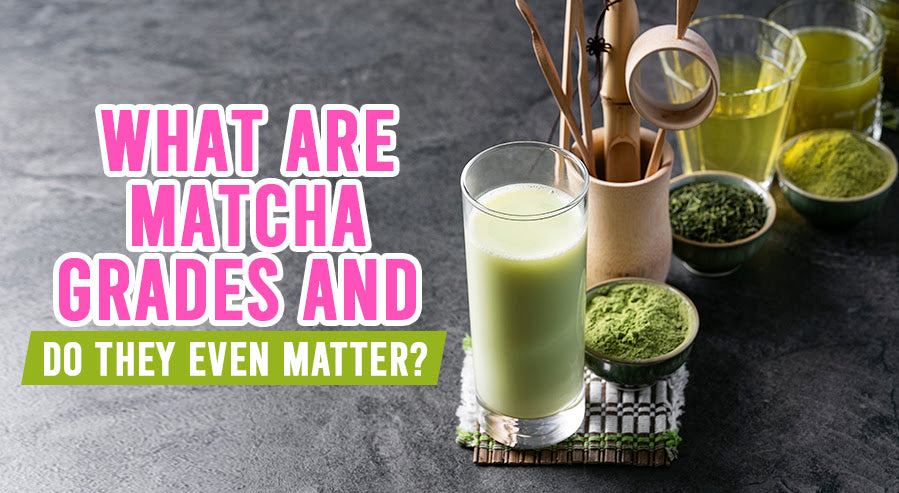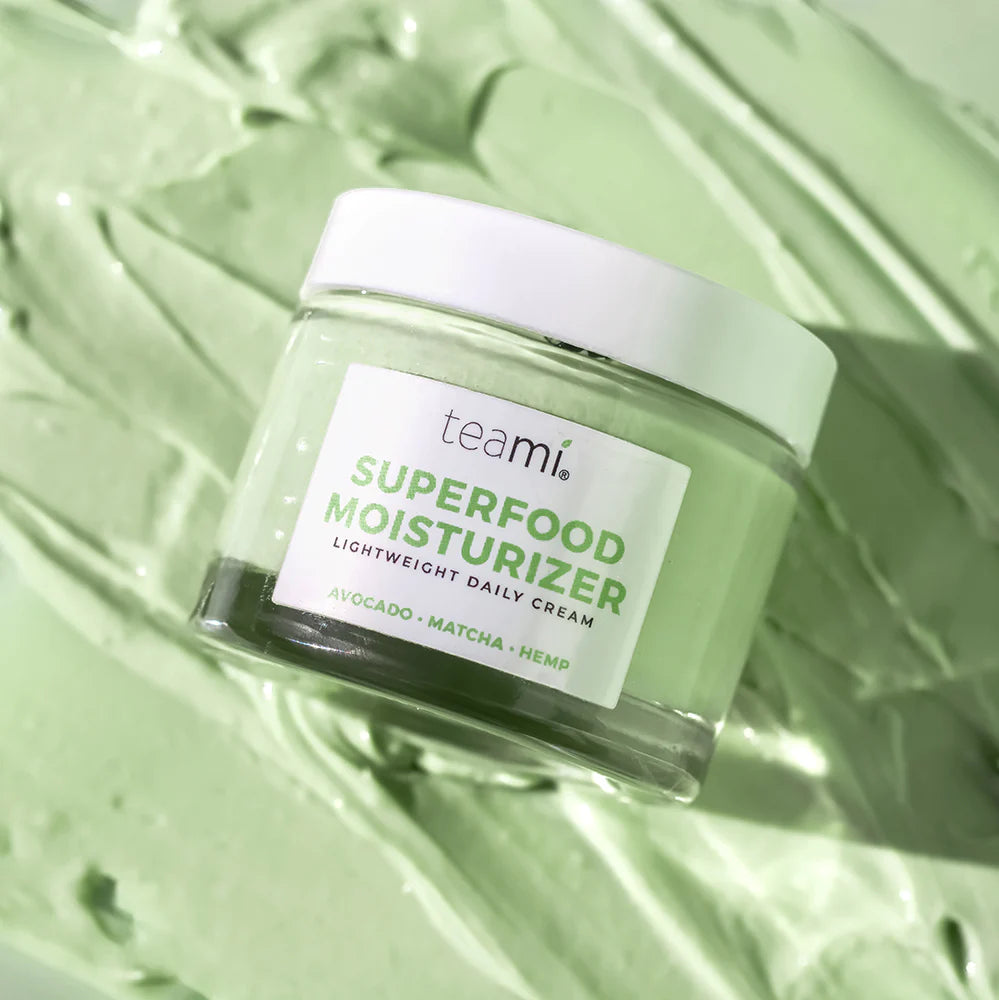Guide: What Are Matcha Grades And Do They Even Matter?

Matcha - for starters - has really become a favorite in the tea community.
You can see why that is really true. It has a taste with some really smart properties. There are a bunch of options available for you to choose from. Take the time to really look into all the different grades of matcha. You'll really see how it can change your own general experience for the better, too. If you like a calm morning cup of tea or you just like adding it to a recipe. Then, you'll find that learning about it can really help you out. You'll soon see that each grade has its own twist with its own taste. The quality and the price can also really vary quite a bit for each grade.
Just to give you an example - the ceremonial matcha stands out with an especially great color. It can really work well for the traditional tea ceremonies. Generally speaking the culinary grade can have a bolder flavor and it's really great for the recipes. Don't worry if it can feel a bit confusing at first though. I have found that the more you study it, the clearer that it really gets. So, this guide can really help you out along the way.
Let's get started!
What Are Matcha Grades?
You're going to want to take a close look at the matcha grades. These are the labels that you'll see on the packages. This process can help you to get the perfect experience if you're sipping matcha on its own or in recipes. In most cases, you'll be introduced to categories like "ceremonial," "premium," and "culinary." These can help you with your choices. It's really worth it when you learn about what these labels mean.
Ceremonial matcha comes from the traditional Japanese tea ceremonies. It is seen as the highest quality option. It is made from the youngest of the leaves harvested early and then ground into a fine powder. You'll really see its bright green color and its smooth texture. It even has a sweet and earthy scent - this grade is intended for drinking as-is with just water alone. It can give you a relaxing and meditative experience. It is like a luxury in a cup with a vegetal sweetness. It has a smooth and rich taste that brings out the umami flavor. When you are looking for the best matcha experience possible, then this one is for you.
In most cases, the "premium" grade sits between the ceremonial and the culinary matcha grades. In most cases, it is more flexible and a good choice for sipping or mixing into recipes. This is where you want that delicious matcha flavor. The leaves for this grade are picked a little bit later. This gives it a nice and balanced taste, along with a great green color. If you like making matcha lattes or want a slow and relaxing sip to unwind, this grade can give you a really great blend of quality and flexibility. It is refined yet approachable for everyone.

For cooking or baking, the culinary-grade matcha is a great choice. You can use matcha for smoothies, baked goods, or even savory dishes. It is made from older leaves, so it has a more textured feel to it. Usually, the color is not quite as great, but the strong, earthy flavor is where it really stands out. This strong taste works well when paired with other ingredients. This makes it a good choice for recipes where you are after that specific matcha flavor without spending too much. You will get the flavor you need without it being too expensive.
These different grades are there to help make your choice even easier for you.
The next time you are thinking about picking up some matcha, think about how you are planning to use it. Are you whisking a traditional tea bowl or making a creamy latte or perhaps adding matcha to a dessert? You should always choose the right grade for the best results!
Does Grade Affect Taste and Use?
Ceremonial-grade matcha can give you a wonderful sensory experience. Its bright and great green color combined with a delicate and balanced taste are really at their best. You'll sometimes see the sweet, savory, and earthy notes coming through, along with a smooth and creamy texture. I always think that it's a true masterpiece. The fresh and earthy smell without any bitterness helps it to stand out. Sometimes, this matcha stands out during traditional tea ceremonies. It can even stand out when you like it in a matcha latte. When you whisk it with warm water, you can create a frothy and smooth treat that's hard to resist. The ceremonial matcha can elevate the entire experience.
In contrast, the culinary-grade matcha is a really flexible option. Its stronger taste comes in when the other ingredients need help. You'll find that its grainier texture and deeper green color can work well in items like baked goods. Smoothies or even savory dishes can also benefit. It might not appear as bright, but it packs a punch in terms of flavor, especially when it's combined with creamy or sweet parts. You probably wouldn't sip it alone, though. But for the recipes, it really has the boldness you're after. In my kitchen, the culinary-grade matcha is exactly what I reach for whenever I want to add a great, flavorful touch to different dishes.

Does a higher grade always mean better taste? That depends on your own personal preferences. You could really love the stronger and bolder notes of the culinary matcha, especially if you're hoping for your drinks or recipes to pop. I've met people who feel exactly the same way! But when you're baking or making a smoothie, the ceremonial matcha's softer notes can disappear into the background. This comparison can help you find out which type of matcha best fits what you're creating.
However, be careful when swapping between the two grades. Imagine accidentally adding salt when you wanted sugar! Sometimes, the ceremonial matcha in a recipe can even leave the flavors a bit too mild. On the other hand, the culinary-grade matcha in your cup could feel too strong or bitter. Each type of matcha plays its own part. Once you learn when to use each one, you can stay away from those flavor mix-ups and get the most out of your matcha experience.
So choose the matcha that best fits what you need. If you're hosting or just want something extra special, then the ceremonial grade is probably the perfect choice. But if you're making matcha cookies or adding that signature green touch to noodles, choose the culinary grade. It can give you the flavor you're looking for. Matcha isn't a one-size-fits-all situation. Part of the fun is discovering what works best for you as you start your own matcha experience!
Is Expensive Matcha Always Better?
You could just want to grab that expensive matcha that's sitting there on the shelf. But does a higher price always mean that it's of better quality? It really does not have to! When you make the matcha, it can mean the hand-picking and careful stone-grinding of the leaves. It's a delicate process that you can really like. But there are other factors to think about, too. You could want to think about these factors before picking purely based on the price.
Just take a look at where your best matcha actually does come from. In most cases, places like Uji or Kagoshima in Japan are known for making top-tier matcha products. This naturally drives the price up higher. On the other hand, Chinese matcha is sometimes machine-picked, which makes it cheaper. It might not give you the same deep and rich flavor that you would experience with the Japanese matcha, though. But it can still work great in your own kitchen. So, your own taste and your budget can help you better than just focusing on the price tag itself.
With the branding, you can see price differences. Sometimes the established businesses with certifications can feel more authoritative. Yet sometimes it's just the market that is driving their prices higher and not necessarily the quality. You can still find great matcha from smaller and the lesser-known businesses at much better prices. If you spend time learning about why the businesses are respected then it can help you a lot. You can then see past all the marketing noise.

The quality can vary quite a bit across the different matcha types available. Just to give you an example, the ceremonial-grade matcha is the best option for drinking. It has a great color and a smooth, delicate texture. It really shows its premium quality when it's prepared well at home. But if you're making matcha cookies or smoothies, then the culinary-grade matcha is perfect. It's bolder in flavor and cheaper, too. Knowing the difference between grades can really help you pick the right one for whatever you're creating.
The price does not always reflect the actual quality. High-end matcha is not automatically the best decision for you. In most cases the marketing and branding can sometimes confuse us about what is really the top quality product. Instead look at things like its bright color and its soft fragrance and its smooth texture. Those details will tell you more about its quality than what the price tag does anyway.
So check in with your own taste and know what each grade has to give you. This brings you way more satisfaction than just going by the price alone. Personally I have found that looking at the different types of matcha is really fun and rewarding. When you start with what you like best. And once you get a sense of what you really like then your choices can become much easier. You'll be able to handle the topic of matcha with confidence and ease!
How to Choose the Right Matcha for You?
Let's talk about how you can choose the right matcha for yourself. You don't need to just pick the prettiest tin you see or depend only on labels like "ceremonial" or "culinary." You should actually think about what matches your own tastes and your preferences. That way, you can be sure that the matcha you choose really works for you.
First off, start thinking about the taste that you're really going for. Do you like matcha that is really smooth with a soft sweetness? You'll probably like the ceremonial grade. It tends to have that sweet flavor with just a slight touch of bitterness. If your plan is to add matcha to smoothies or use it in baking. Then the culinary grade could be a better fit for you. Its bolder green tea flavor will stand out more when it's mixed with the other ingredients.
Just remember how you're planning to use the matcha. In some cases, the ceremonial grade works best. This is especially true in the more traditional settings, such as when sipping plain matcha tea during a peaceful break. The culinary grade - on the other hand - is great for recipes like baked goods or even the savory dishes you love. But if matcha lattes are more your speed (like they are for me), you can go for something in between, like the latte grade. It's a nice balance between the taste and the cost while staying flexible for you.

Now, let's talk about your budget. Higher-quality matcha tends to be priced higher, especially with the ceremonial grade. When you spend a little extra, it can sometimes cause better flavors and experience. This is better than just picking the cheapest option on the shelf. But don't feel like you need to break the bank, either. Just balance your budget with the kind of flavors that you're really going for. So you can get the most value without overspending.
It's smart to buy smaller amounts from a few different grades. You get a feel for the changing flavors without making a big commitment. And remember - make sure that you're really making them the right way. Take a look at things like the water temperature and whisking techniques. This part is really important as it makes sure each cup really brings out the true flavor of the matcha.
When you feel ready to jump in, then give it a try! Make yourself an easy cup of the ceremonial matcha. Then experiment by adding the culinary grade to a dessert or a recipe. Try them side by side and see what stands out to you. As part of the experience, take a bit to take a look at the powder itself. A great green color and a great smell are really good signs that the matcha is something special.
Remember to trust your own taste buds! Labels like "ceremonial" or "culinary" aren't always strictly regulated with matcha. So what really matters is how the matcha tastes to you. Let your own personal preferences steer your choices. You'll end up with the matcha that's a good fit for your preferences and tastes.
Finding The Perfect Blend
After you finish your cup, take a bit of time for yourself. You should think about what you have learned about the matcha grades. Every time you scoop that green and earthy powder, you are really connecting with a tradition. It has lived on for centuries. Whether you make ceremonial matcha for a peaceful second or combine culinary-grade matcha into a dessert, each grade actually has its own story. It shows in its flavor and in its job.
If you think about it, you could actually find that you can like some of the grades more than others. Each one has something different to give to you. The matcha grades don't have strict guidelines. So it can give you the freedom to make the choices that fit you the best. What works well for one person could not necessarily always feel like the right fit for someone else. So it is important to find what matches your own tastes and needs.

At Teami, we are here to make it easy for you to take care of yourself. We have our own teas and wellness products. You will come across blends that are designed to support weight management, help with your sleep, boost your immune system, and even nourish your skin. So go ahead and take a bit of time to check out our shop. You are going to find the blend that is a good fit for you and your lifestyle.
Maybe your next matcha sip or wellness choice could actually be just a cup away. And making small and thoughtful choices like these can help spark positive changes in your life. You are about to unlock a world of possibilities in your cup and in your schedule. I am excited that we get to be a part of your process toward a healthier and happier you!
Subscribe to our Newsletter
Subscribe to our newsletter and get 10% off your first purchase
 Instagram
Instagram



